Wildfire fighting Strategy?
Instead of pouring gallons of water, through a large diameter hose, on a
home that is already burning and unlikely to be saved.
And as a result prematurely emptying Tanks
that feed all hydrants. ( which was seen too often in LA).
Station one or two Firefighters at each adjacent and downwind home ,
armed, simply, with a garden hose!
Putting out spot fires from the flying embers, -- before it ignites
the home. And as a result getting far more success with the limited supply
of water.
Also each Firefighter could carry a spare Fireproof Suit for a fit homeowner
to help in the fight.
If that was a well publicized strategy, in advance of any fire, then perhaps
homeowners, who were not fit enuf, would be more motivated to leave.
And less likely to die trying to save their own home.
Its not flames that
are flying -- Its
embers. See the video of
the
Coffey fire ( high wind) . Many of the embers land and extinguish. A few
others eventually start a spot fire. The spot fires close to the home can
then be attacked before they get any bigger.
The adjacent home's fire facing wall, being hit with
flames, needs to be doused
by the regular firefighters with regular hoses. A small percentage of the
homes being protected.
They might need to abandon a row of closely built houses and focus on homes
on the other side of a road with flames crossing the road.
The high priority here is to conserve water.
If they can cover a home with a tent to fumigate -- they can also with Fire
Barrier material ? For the homes that are about to be hit from the opposite
side of a road. Just the roof and one wall perhaps. |
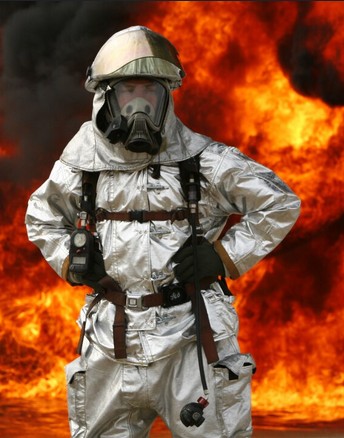
|
Where are our Water Tanks, Pipes, Pumps and Hydrants?
Map of Pipes, Pumps, Hydrants and Tanks
Hydrant's Flow Capacity -- So when the strong wind blows from the east, (the
most dangerous scenario) the hydrants with the least flow are on the burning
forest hillside to our east.

I cannot find any pumps other than those that pump uphill to tanks. So looks
like all homes are getting water by gravity?
Santa Venetia Tank capacity is 310,000 gallons.
See your Hydrants

A Tank (in Santa Venetia)

Compared to Palisade's 3 tanks, a million
gallons each.
They pumped over 3 million gallons of water on that fire.
I believe Terra Linda(2,120,000 gallons) has 1,900 homes ? and Santa
Venetia(310,00 gallons) 1,700.
Terra Linda 4 tanks:
| Capacity |
|
| 500,000 |
RAFAEL HIGHLANDS TANK: |
| 1,000,000 |
LOS RANCHITOS TANK |
| 60,000 |
FAIRHILLS TOP TANK #1 |
| 60,000 |
FAIRHILLS TOP TANK #2 |
| 250,000 |
CHULA VISTA TANK |

Pump Stations

Pipes

A first-ever MARIN
master plan for making fire flow improvements began following voter approval
in 1996.
Voters agreed to pay an annual $75 fire flow fee on their property tax bills to
provide additional water flow for fighting fires and to help ensure the
integrity of our water transmission system following a major earthquake.
In place through 2031, the fee pays for water system improvements, including
replacing aging pipes and seismic stabilization/retrofits at pump stations and
pipe bridges. (Review
exemptions for the fire flow fee).

San
Francisco System
After the 1906
San Francisco earthquake and fire, the city built
the
Auxiliary Water Supply System (AWSS)
to provide a dedicated water supply for firefighting:
|

Reservoir
|
|
|
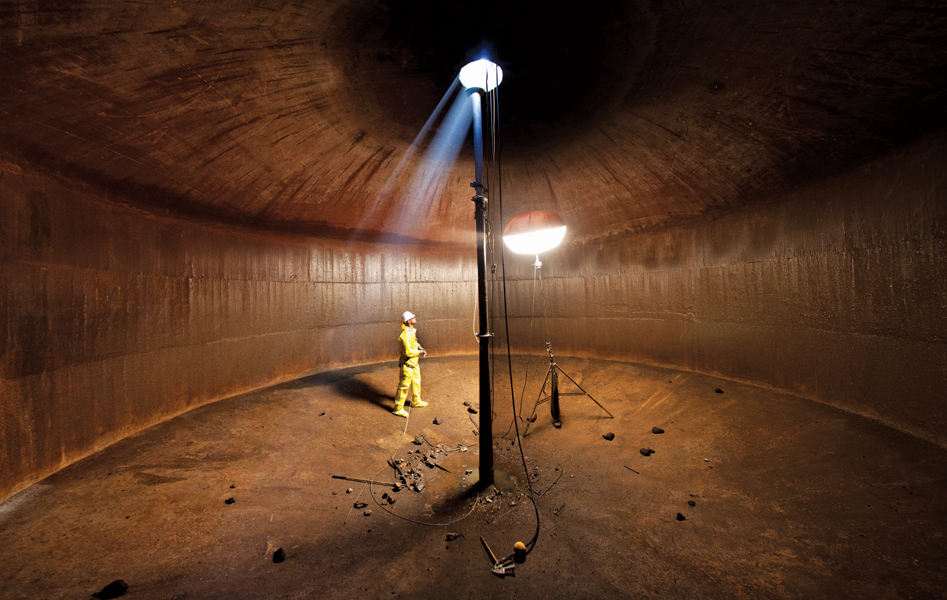
CISTERN
|
|
Purpose The AWSS was built to ensure that San Francisco would never again
be destroyed by fire due to a lack of water. Features
The AWSS is a high-pressure system that's separate from the city's regular water
supply. It includes a 135-mile pipeline network, a reservoir, tanks, pumping
stations, fire boats, and cisterns.
The AWSS can use fresh water from the city's reservoirs and tanks, as well as an
unlimited supply of saltwater from the bay.
Includes 52 suction connections
along the northeastern waterfront, which allow fire
engines to pump
sea water from San
Francisco Bay.
A proposal to install a seawater pump for fighting fires on the City’s west side
was
rejected, although they do support building one on the southeast side.
Cost The AWSS was funded by a $5.2 million bond issue approved by San
Francisco residents in 1908.
Legacy The AWSS is the only high-pressure network
of its kind in the United States.
They concluded that approximately 240,000 gallons
of water per minute will be required to fight fires citywide, and they will need
that amount available for possibly 25 hours at a time without supply
interruption. That comes out to 360 million gallons
of water.

South Africa Sea Water System - STUDY
The firefighting water will be readily available for the largest fire that
may break out.
The use of sea water for firefighting purposes works extremely well
if the maintenance and upkeep of the system is strictly adhered to.
Despite nearly 900 miles of coastline along the Pacific Ocean, firefighters
have largely avoided using seawater "for good reason",
as the salt content can corrode equipment like pumps and other metal tools used
in the firefight. BUT:-
| |
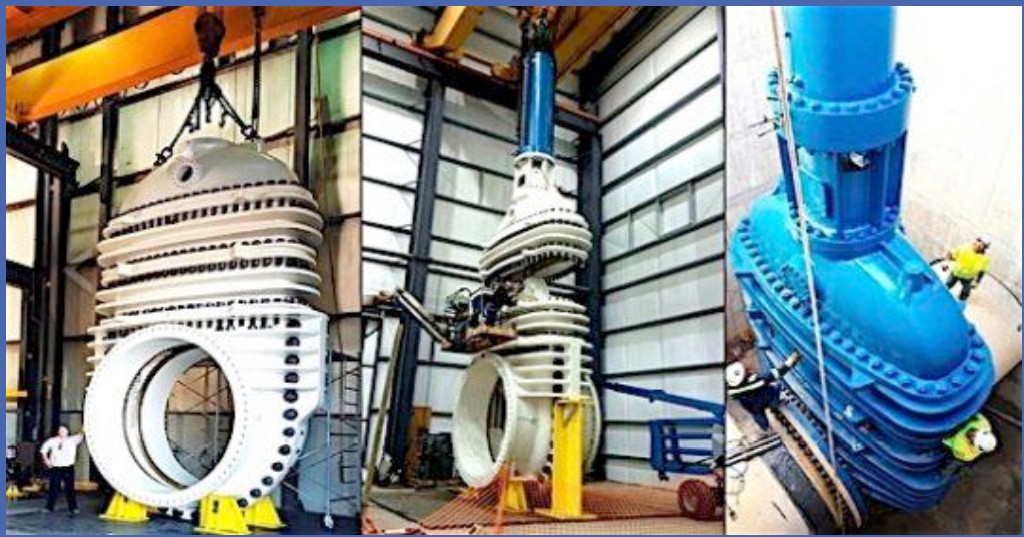
|
| |
Sea Water -- the world's largest gate valve, designed and manufactured by
Blackhall
Engineering for the Integrated Pipeline Project (IPL) in
Texas |
| |
Jockey Pump
will be needed to ensure the pressure is continuously maintained
throughout the system.
Main Pump
is required to supply the required firefighting pressure and comes into
operation once the jockey pump cuts off due to the inability to maintain the
required pressure.
A backup generator is needed
Pumps have an internal epoxy coating to resist the corrosive nature of
seawater.
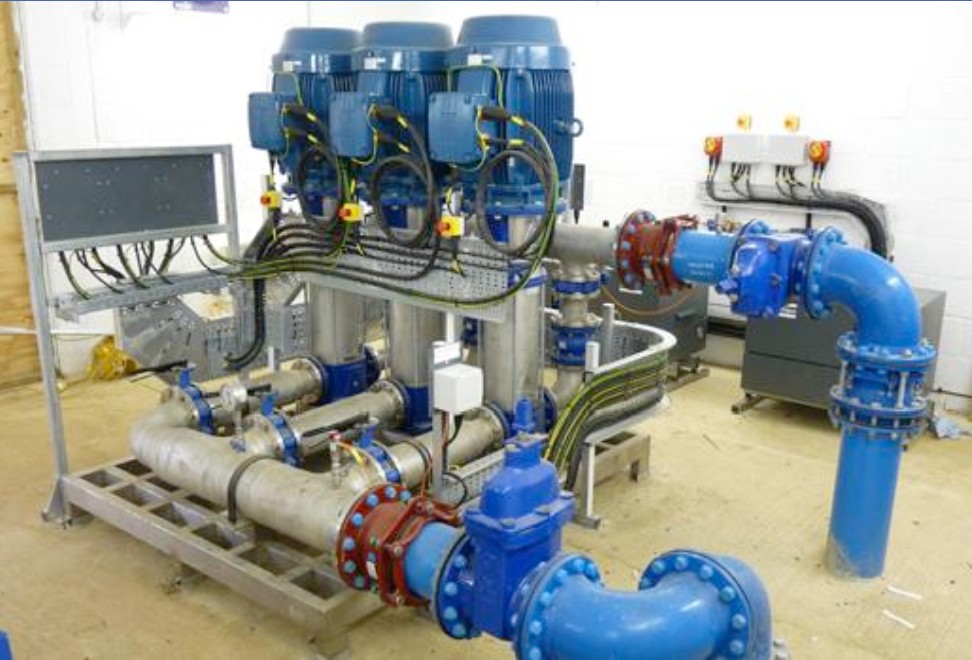
Engen Pump
|
| |
Pipework
• The system should be ring mains having at least two points of
supply so that, in the event of a break anywhere in the line, an
alternative flow path is always available.
• Pipes used in the system could be 508mm (20") external diameter mild
steel pipes with a wall thickness of 6mm.
Internally a 12.5mm thick spun cement lining can be provided and
externally pipes can be protected against corrosion by two layers of
bitumen-impregnated fibre glass.
Isolating valves
• The pipe reticulation should have butterfly valves between tee
pieces to be isolated.
|
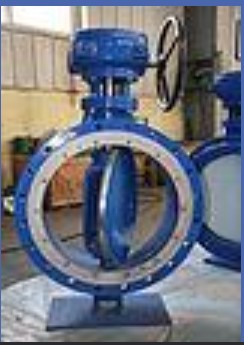
Isolating valve
|
|
| |
Hydrants
mounted on top of the seawater mains, should be spaced at 60m intervals (could be less depending on the
risk)
and must be accessible by road.
Each hydrant should have at least 4 outlets.
Foam (optional)
2 options - CFI (Central Foam Injection)
system or Foam Tankers
- • A CFI system requires careful
consideration of the siting of the Foam Storage Tanks in relation
to the furthest point being protected.
• The disadvantages of the CFI system being the exorbitant associated
costs and delays in reaching distant
points.
The system will require storage tanks, pumps, inductors and generators
etc. similar to the set up of the main pump/s.
A scour valve is needed and the scour valve must be opened to flush out
the sea water before foam solution can be introduced into the foam
equipment.
- • Foam Tankers can be deployed to
the emergency and foam can be introduced into the sea water system fairly
quickly.
Tell your Fire Fighters
who are saying this stuff:
"If we used seawater for all inland fires, we would have to draw it out of
the ocean, transport it by truck to a location, dump it into some kind of
portable holding pool, and then draw it into our pumps for use on the fire
…"
AND
"To use salt water as effectively as hydrant water, it needs to be
desalinated" |
SOURCE SEARCH: "using
pumped seawater to fight fires"

Pump + Garden Hose from Pool/Pond/River/Ocean
You need a "high pressure" pump. A "maximum head" of 200 feet. (that is, the
pump can push water 200 feet up a pipe). That is 86PSI . A 1/2hp pump is 120-150
feet HEAD. A typical garden hose flow rate is usually between 9 and 17 gallons
per minute. HP = (PSI x GPM) / 1714.
So PSI = (HP x 1714) / GPM = (1/2 x 1714) / 17 = 50psi
at 17gpm ( not 86psi but at 9gpm its 95psi ) so a 1/2HP pump may not work. And
with a 100ft hose?
Pumps with a maximum head of 80-100 feet won't produce enough pressure to spray
water over your house. Maybe 20-25 feet up, maximum.
In most cases, a relief valve is not necessary for a modern
sump pump draining a pond/pool/hottub to a
garden hose with a closed nozzle, as the
pump itself will usually adjust its operation to handle
the lack of flow when the nozzle is closed, reducing its speed and
preventing excessive pressure build-up;
VIDEO
Can a water pump be used for a garden hose? This is
a centrifugal pump which has “100% Slippage”
meaning when the pump is turning and the discharge side is closed (not flowing)
the insides of the pump continue to turn without any need for a relief valve.
The only concern to be aware of is the water inside the pump housing overheating
resulting in water vapor (essentially steam) which can damage the pump’s
impellers or housing - essentially ruining the pump.
To prevent the pump from overheating keep some water flowing through it.
Feel the pump housing with your bare hand to gauge if its overheating.
If it is warm or hot you need to get water moving through it to cool it down,
but other than the overheating/cavitation concern there is no problem with
occasionally stopping the flow through a centrifugal pump. Cavitation sounds
like rocks inside the pump
COMMENT :-- on my setup i use a 3/4 relief valve,
same as i use on my deepwell home water system, at about
80-85 psi it opens,
it allows water to recirculate while the nozzle is closed, keeping the pump
cool.
my pump is a fire pump, twin impeller, at 90% throttle it will charge a 1 1/2,
and a 1 in fire hose at approx 125 psi,
ELSE if i close the nozzle while using i have to keep water moving, or risk
destroying the pump seals. Use a hose Y junction for 2 100' hoses.

MARIN WATER SUPPLY INCREASE STUDY
Save Santa Venetia from fire
Video
of Fire Storm in Coffey Park
Mill Valley Tree Fire Ordinance
What can the car + inverter actually power?
History of Marin's High Winds
They saved a Mendocino County community from a hurricane of fire
Dick Spotswood: Lawsuit to prevent Mill Valley’s vegetation management wildfire
plan is murky
|
Tank |
Capacity |
Type |
| SMITH SADDLE TANK #2 |
5,000,000 |
TRANSMISSION |
| SMITH SADDLE TANK #1 |
5,000,000 |
TRANSMISSION |
| MILL VALLEY TANK |
5,000,000 |
TRANSMISSION |
| FORBES HILL RESERVOIR |
4,000,000 |
RESERVOIR |
| PACHECO RIDGE TANK #1 |
3,000,000 |
TRANSMISSION |
| PACHECO RIDGE TANK #2 |
3,000,000 |
TRANSMISSION |
| PINE MOUNTAIN TUNNEL |
3,000,000 |
TRANSMISSION |
| ALTO TANK #1 (Mill Valley) |
3,000,000 |
TRANSMISSION |
| ALTO TANK #2 (Mill Valley) |
3,000,000 |
TRANSMISSION |
| SAN GERONIMO CLEARW |
3,000,000 |
CLEARWELL |
| MARINSHIP TANK |
1,500,000 |
GRAVITY |
| LAGUNITAS PICNIC GROUNDS TANK |
550 |
DISTRIBUTION |
| MOUNT TIBURON TANK #2 |
590,000 |
DISTRIBUTION |
| REDWOOD DRIVE UPPER TANK |
60,000 |
DISTRIBUTION |
| GOODHILL ROAD TANK |
60,000 |
DISTRIBUTION |
| MONTE MAR VISTA TANK |
60,000 |
DISTRIBUTION |
| CASCADE TANK #2 |
60,000 |
DISTRIBUTION |
| CASCADE TANK #1 |
60,000 |
DISTRIBUTION |
| FAIRHILLS TOP TANK #2 |
60,000 |
DISTRIBUTION |
| SCOTT TANKS |
60,000 |
DISTRIBUTION |
| SCOTT TANKS |
60,000 |
DISTRIBUTION |
| MARINER HIGHLANDS TANK |
60,000 |
DISTRIBUTION |
| MANZANITA TANK |
60,000 |
DISTRIBUTION |
| FAIRHILLS TOP TANK #1 |
60,000 |
DISTRIBUTION |
| LOS ALTOS TANK |
60,000 |
DISTRIBUTION |
| TAM WOODS TOP TANK |
80,000 |
DISTRIBUTION |
| TAM WOODS FIRST LIFT TANK |
85,000 |
DISTRIBUTION |
| GLENWOOD FOREST TANK |
90,000 |
DISTRIBUTION |
| FAWN DRIVE TANK |
90,000 |
DISTRIBUTION |
| ELINOR Ave (Mill Valley) |
113,000 |
DISTRIBUTION |
| LONETREE AVE (Mill Valley) |
100,000 |
DISTRIBUTION |
| SCOTT HIGHLANDS (some Mill Valley) |
250,000 |
DISTRIBUTION |
| H-LINE ROAD (Mill Valley) |
500,000 |
DISTRIBUTION |
| SLIDE GULCH TANK (Mill Valley) |
97,174 |
DISTRIBUTION |
.... 129 tanks
Capacity
gallons |
Nbr Tanks out of top 77
|
|
100,000 |
13 |
|
60,000 |
12 |
|
500,000 |
11 |
|
1,500,000 |
11 |
|
250,000 |
6 |
|
1,000,000 |
6 |
|
3,000,000 |
6 |
|
120,000 |
4 |
|
150,000 |
4 |
|
310,000 |
4
|
So Mill Valley has approx, 1 million gallon capacity, DISTRIBUTION
And 6 million TRANSMISSION ( whatever that means) ???
If the 6m cannot be accessed by hydrants -- how can
firemen access it in an emergency ? |

1. A launcher releases projectiles that open before impact to disperse
eco-friendly fire-retardant to create a protective barrier and block the path of
wildfires.
2, Computer vision and sensor technology detects and extinguishes spot fires.
The projectiles contain sensors that identify where to
- open up,
- disperse the material in the air above the ground
So if a fire approaches, it will block it and
the 2nd layer to identify and extinguish to spot fires.

Orgs
-
AlertMarin: The Marin County emergency notification system used
to alert residents of emergencies.
- Fire Safe
Marin: A nonprofit group promoting fire awareness and
preparedness within Marin County.
- Marin
Wildfire Prevention Authority: An agency created to focus on
wildfire mitigation efforts in Marin County.
-
Neighborhood Response Groups: Groups of residents who coordinate
to assist each other and their community during emergencies.
- ReadyMarin.org:
A program that trains residents on how to pack go-bags, check evacuation maps,
and flee safely during an emergency.

|

